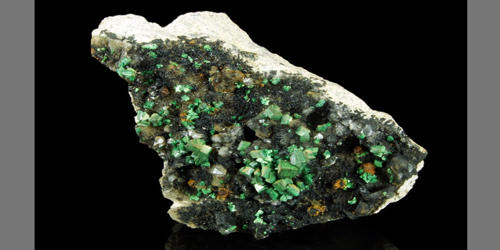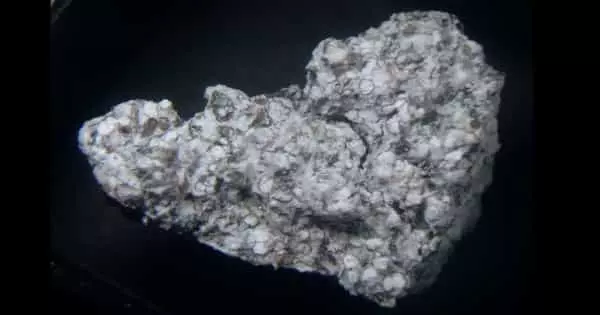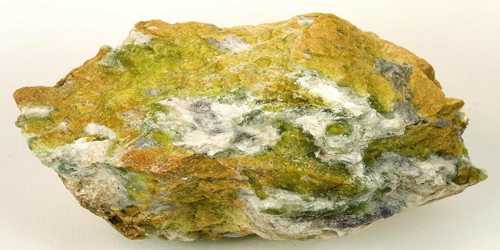Malachite is a copper carbonate hydroxide mineral, with the formula Cu2CO3(OH)2. It is a green copper carbonate hydroxide mineral. This opaque, green-banded mineral crystallizes in the monoclinic crystal system. It was one of the first ores used to produce copper metal. It is a copper mineral, and that gives malachite a high specific gravity that ranges from 3.6 to 4.0.
Malachite has been used as a gemstone and sculptural material for thousands of years and is still popular today. Individual crystals are rare, but occur as slender to acicular prisms. Pseudomorphs after more tabular or blocky azurite crystals also occur.
General Information
- Category: Carbonate mineral
- Formula: Cu2CO3(OH)2
- Crystal system: Monoclinic
- Crystal class: Prismatic (2/m) (same H-M symbol)

Properties
Malachite is a mineral that forms at shallow depths within the Earth, in the oxidizing zone above copper deposits. It’s most striking physical property is its green color. Non-crystalline specimens are opaque, usually with a dull to earthy luster.
- Formula mass: 221.1 g/mol
- Color: Bright green, dark green, blackish green, with crystals deeper shades of green, even very dark to nearly black commonly banded in masses; green to yellowish-green in transmitted light
- Crystal habit: Massive, botryoidal, stalactitic, crystals are acicular to tabular prismatic
- Twinning: Common as contact or penetration twins on {100} and {201}.
- Cleavage: Perfect on {201} fair on {010}
- Fracture: Subconchoidal to uneven
- Mohs scale hardness: 3.5–4
- Luster: Adamantine to vitreous; silky if fibrous; dull to earthy if massive
- Streak: Light green
- Diaphaneity: Translucent to opaque
- Specific gravity: 3.6–4
- Optical properties: Biaxial (–)
Occurrence
Malachite often results from the weathering of copper ores and is often found with azurite, goethite, and calcite. Large quantities of malachite have been mined in the Urals, Russia. Ural malachite is not being mined at present, but G.N Vertushkova reports the possible discovery of new deposits of malachite in the Urals. It is found worldwide including in the Democratic Republic of the Congo; Gabon; Zambia; Tsumeb, Namibia; Mexico; Broken Hill, New South Wales; Lyon, France; Timna Valley, Israel; and the Southwestern United States, most notably in Arizona.
Associated minerals include azurite, bornite, calcite, chalcopyrite, copper, cuprite, and a variety of iron oxides.
Use
Malachite was used as a mineral pigment in green paints from antiquity until c. 1800. It is a stone of balance, abundance, manifestation, and intention. An extremely powerful metaphysical stone, Malachite is often called the “stone of transformation” and is used for deep energy cleaning, bringing healing and positive transformation to the wearer. It pinpoints tumors, realigning and repairing the DNA and cellular structure that causes cancers. It can be used on all forms of cancer and enhances and stimulates the immune system.
Malachite is also used for decorative purposes, such as in the Malachite Room in the Hermitage Museum, which features a huge malachite vase, and the Malachite Room in Castillo de Chapultepec in Mexico City.
Information Source:
















